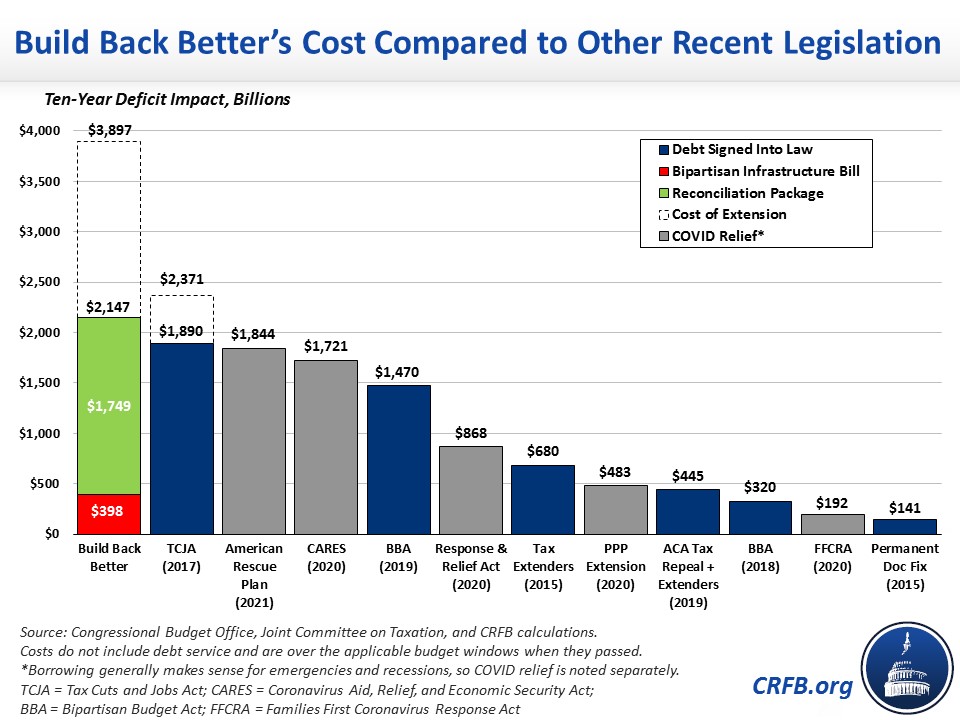Comparing the Cost of Build Back Better to Other Recent Legislation
Lawmakers are preparing to consider both portions of President Biden's Build Back Better agenda – the Senate-passed bipartisan infrastructure bill and a reconciliation bill based on the Fiscal Year (FY) 2022 Senate-passed budget resolution. We estimate that these two bills could add more than $2.1 trillion to the debt directly and set the stage for $3.9 trillion of additional debt over the next decade, excluding interest. If so, they would combine to be more expensive than any legislation since the American Taxpayer Relief Act of 2012 (which extended most of the 2001/2003 tax cuts).
As we've shown, the bipartisan infrastructure deal would cost $400 billion before interest, and the budget resolution will allow up to $1.75 trillion of new borrowing (though lawmakers could borrow less). If lawmakers use this full borrowing authority, debt would rise to 114 percent of Gross Domestic Product (GDP) by 2031. Since lawmakers also intend to allow many provisions in reconciliation to expire, we estimate extensions could lift debt to 119 percent of GDP.
The $2.1 trillion direct potential cost of Build Back Better would be larger than the 2017 Tax Cuts and Jobs Act (TCJA), the recently-enacted American Rescue Plan, the 2020 CARES Act, or the Bipartisan Budget Act of 2019 (note: these figures are in nominal dollars over the original scoring windows). Build Back Better would cost about 15 times as much as the permanent "doc fix" enacted in 2015, which we warned at the time would open the flood gates to more borrowing.

To the extent elements of Build Back Better are extended without offsets, the costs could be far higher – more than 60 percent larger than the TCJA (with extensions), more than twice as large as the CARES Act, and more than 2.6 times as large as the Bipartisan Budget Act of 2019.
To be sure, some borrowing, like COVID relief, is sensible and appropriate in times of emergencies and recessions. But all borrowing worsens our already unsustainable fiscal situation. And given the current state of the budget and economy, it’s time to say enough is enough. As lawmakers move forward, they must fully offset the cost of their reconciliation bill as promised and should identify additional concrete offsets for infrastructure. We don't need massive new borrowing to Build Back Better.
Read more options and analyses on our Reconciliation Resources page.

